ACCESS CONTROL TYPES AND MODELS
ACCESS CONTROL TYPES
The word “access control” refers to the process of allowing people into or out of a restricted location. It entails recognizing a person, verifying them using their unique identifier, and granting them access to the needed location or asset. Every time a person uses a keycard, fob, or biometric scanner, an access control system creates an entry record in the system. This makes it simple to keep track of who enters and exits the building. The management style of a selected access system, as well as how you identify which persons have particular access permissions, are affected by the distinctions in the types of systems. To help you get started, this post breaks down 10 different forms of access control user permission management.
There are several sorts of access control systems available, and determining which is appropriate for your company is ideal. Only authorized persons are allowed in sensitive parts of a structure, therefore access control is essential. As a result, installing a commercial access control system is critical for maintaining security in these locations and reducing the danger of unwanted activity in your company.
WHY YOU MAY NEED ACCESS CONTROL SYSTEMS AND DEVICES AT YOUR OFFICE:
– More control: You can simply cancel or increase access credentials for your workers as a business owner. You can do all of this with some systems using your smartphone.
– Increased security: You may configure all of your doors to automatically lock after business hours using an access control system. As a result, you won’t have to worry about someone forgetting to physically lock a door.
– Access to several locations: Do you have a separate campus or office building? Managers and staff who go from one location to another will benefit from an access control system.
– Quicker emergency response: In the case of an emergency, all entry points may be promptly locked to avoid theft or danger to staff.
–Reduced energy costs: Many access control systems may be linked to your building’s HVAC and electrical systems to turn off lights or raise/lower the temperature automatically after business hours.
– Most access control systems will integrate with your existing security system, making it easy to monitor and safeguard all elements of your organization.
10 Models for Access Control
- Mandatory Access Control (MAC): Mandatory Access Control is often seen to be the most stringent sort of access control. System administrators have built settings that regulate all doors. Users cannot modify permissions that prohibit or enable them access to various rooms in the facility under this system, protecting the protection of critical documents and data. The system also limits the capacity of a file system owner to prohibit or give access to resources specified in a file system. All end users are categorized and given labels that allow them to access information only if they follow the security requirements. Security labels such as user security clearance and data classification (confidential, secret, or top secret) are used to establish the level of trust. It restricts access to resources depending on the sensitivity of the information included in the resource and the user’s authority to access information of that sensitivity level. Because of the emphasis on uniform data categorization and secrecy, it is often utilized by government agencies and the military. Mandatory Access Control is sometimes considered as the polar opposite of Discretionary Access Control, the next form of access control management.
- Discretionary Access Control (DAC): Discretionary Access Control allows company owners to choose who has access to certain portions of the building or resources. The data owner has complete control over all of their system’s programs and files, as well as who has access to which resources. As a result, they are in charge of choosing who may enter a certain site, whether digitally or physically. A system administrator, for example, may construct a hierarchy of files that may be accessed based on permissions. User authentication is done using credentials provided by the user, such as a username and password. This sort of access control allows for selective limitation by ensuring that people who log in have the authorization to view the company’s data.
DAC is simple to use and understand, however, it may not be the optimal solution owing to some of its drawbacks. One drawback is that the end-user has total control over the security level settings for other users, limiting negative authorization scrutiny. Furthermore, unlike a rigid structure, this method needs more active management to revoke and provide permits. DAC is typically thought of as the polar opposite of MAC, which is more organized and rigid.
- Role-Based Access Control (RBAC):
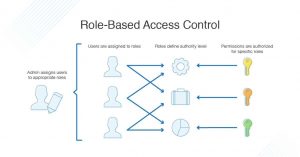
Role-Based Access Control, as opposed to a single user, is meant to enable or limit access based on specific roles with defined business responsibilities. The permissions that an employee is allowed are determined by their status in the business, ensuring that lower-level employees do not have access to sensitive information or conduct high-level duties. The most prevalent method of controlling user permissions is RBAC. This strategy employs access privileges based on changeable factors such as resource requirements, job, environment, and location, among others.
- Rule-Based Access Control:
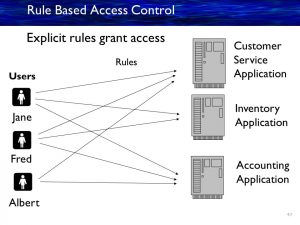
Access rights are granted according to specified rules and policies in this sort of system administration. Access is allowed or restricted depending on a set of rules provided by a system administrator. When a user or a group tries to access a resource, the operating system examines the rules in the object’s access control list. Although rule-based access control is straightforward, it is frequently supplemented with role-based access control to ensure that processes and rules are followed. For example, administrators can define permissions that enable students to go to the lab at a specific time of day by categorizing a position and its regulations. Owners can control users in groups based on their work or position, rather than allowing access to each individual. RBAC essentially eliminates discretion when it comes to allowing access to things. A human resources professional, for example, should not be authorized to create network accounts; network administrators are responsible for this. This paradigm is highly relied upon by businesses to secure sensitive data and mission-critical systems. For administrators, increase operational efficiency, compliance, and visibility while saving expenses and reducing the risk of data breaches and leaks. Role-based security is used to manage user permissions, which is a flexible and secure method.
- Attribute-based Access Control:
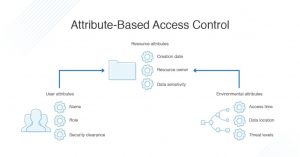
This kind of management is also known as policy-based control since it gives differentiated dynamic and risk-intelligent control based on the unique qualities of a person. Attributes are the building blocks for characterizing access requests and controlling access. Set policies can then evaluate whether a user should have access based on any of the following factors: object attributes, resource attributes, environmental attributes, or user attributes.
It’s a complex method of determining access based on criteria like group, department, employee status, citizenship, position, device type, IP address, or any other factor, all while being guided by role-based access control. These characteristics may also be obtained and imported from a database, Salesforce, an LDAP server, or even a business partner, making it possible to combine it with larger business operations.
- Identity-Based Access Control (IBAC):IBAC is a basic security solution that uses visual or biometric identity to determine whether a person is authorized or denied access to a specific electronic resource. As a result, whether a user’s identity can be matched to a name on an access control list will determine whether they have access to an electronic resource. This strategy allows network administrators to better control activity and access based on individual needs. One of the benefits of an identity-based security approach is the ability to impose very fine-grained control over who may access certain services and what actions those users are really performing. It’s also useful to be able to apply access control restrictions to a variety of devices, such as smartphones, tablets, and PCs.
- HBAC (History-Based Access Control):
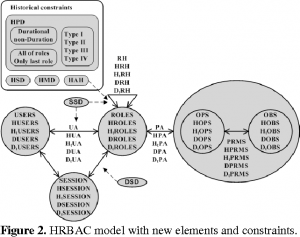
The judgments of this access control management system are mostly based on prior security activities. The prior acts of the user determine whether or not he or she will be granted access. This demands a real-time evaluation of the user’s prior activity, such as the time between requests, the content of requests, which doors have been recently opened, and so on. For example, based on the user’s historical behavior, such as when the request interval exceeds one query per second, access to a specific service or data source may be granted or refused.
When reviewing the security rules and permissions of larger enterprises with numerous users, such as third-party firms, organizational-based access control (OBAC) comes in helpful. This method provides a high level of scalability and expressiveness. Each security policy is developed by and for a single entity inside the larger system. As a result, the organization’s security policy architecture is completely parameterized, allowing it to manage many security policies connected with different firms at the same time.
ACCESS CONTROL SYSTEMS IN THE TOP 3
- PAXTON: With over 30 years of experience, Paxton designs and manufactures market-leading security systems for a variety of buildings. Paxton products are guaranteed to protect around 25,000 buildings throughout the world every year. The company’s global headquarters are located in Brighton, United Kingdom.
- ZKTECO: With patents covering fingerprint, iris, face, vein, and palm print identification techniques, ZKTeco is a worldwide famous provider of biometric verification algorithm approaches, sensors, and software platforms., as well as patents covering compute vision techniques such as facial recognition, behavior identification, X-ray object identification, and video structure, making ZKTeco one of the most patent-rich companies in the industry.
- SUPREMA: Over the last few decades, Suprema has revolutionized the security market by combining world-renowned biometric algorithms with great engineering. Suprema’s extensive portfolio includes biometric access control systems, time and attendance solutions, fingerprint live scanners, mobile authentication solutions, and integrated fingerprint modules. With a global sales network spanning over 140 countries, Suprema has been named one of the top 50 security manufacturers in the world.
NEED A FREE RISK ASSESSMENT AT YOUR OFFICE OR BUSINESS STORE? , contact us at SecureTech.
